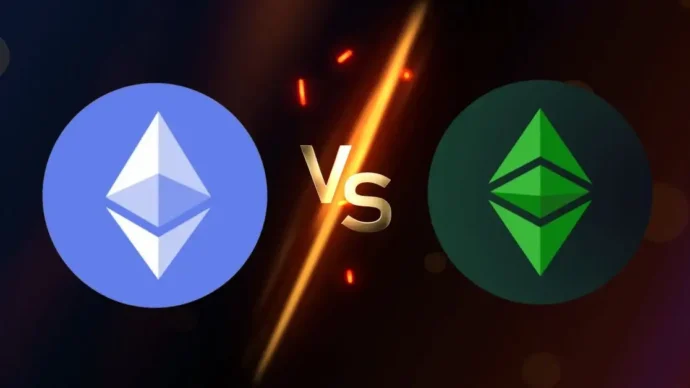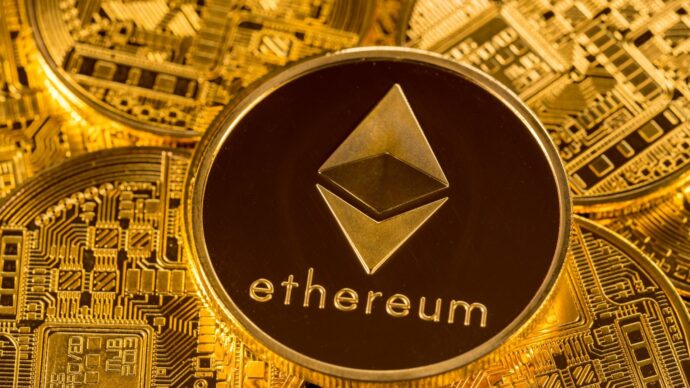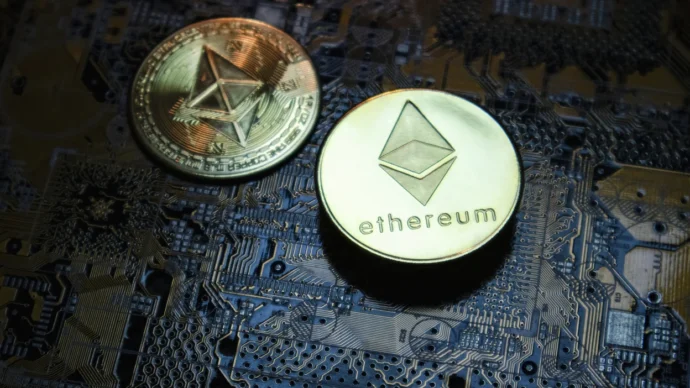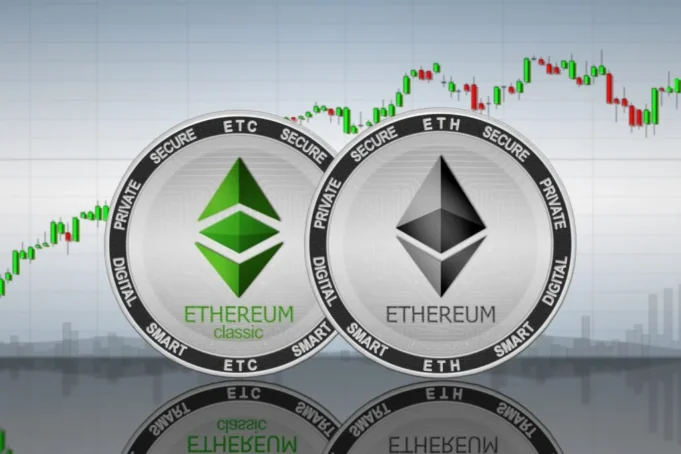Bitcoin is probably the first name that comes to mind when discussing the various types of cryptocurrencies. However, as you dive deeper into the topic, you will come across more types of cryptocurrencies such as Ethereum. There are two types of Ethereum coins and we will discuss them in depth in this article.
Both of these coins are distinct from one another, and use their own tokens, even though they share a common ancestor chain. It’s important to know the differences between these two cryptocurrencies before putting any money into either one, so let’s compare Ethereum and Ethereum Classic.
What Are The Distinctions Between Ethereum And Ethereum Classic?
The blockchain that gave rise to Ethereum also gave rise to Ethereum Classic. Vitalik Buterin published the whitepaper that introduced the world to this crypto coin in 2013. But the public blockchain wasn’t released until 2015. The split took place in 2016 after the database was hacked. Well, even today the two blockchains are exactly the same till 1 lakh 92 thousand blocks.
The ETH blockchain saw the creation of the first decentralized autonomous organization (DAO), and it was subsequently compromised. Since the hack was never recorded, the blockchain underwent a hard fork that allowed this coin to advance. All tokens that were stolen in the hack were restored on the new blockchain as part of the hard fork.
The original code and a record of the hack are preserved in the Classic blockchain. For this reason, the Classic chain is not up to date with the latest features of the main blockchain.
More About The Two Coins

Although the new main chain, Ethereum, has more users and has founder Buterin’s support, Classic is the original blockchain. Similar to Ethereum, Classic facilitates the creation of smart contracts and blockchain-based decentralized applications. You need a wallet that can store both ETH and ETC. However, both of these coins are not identical. You must know that the Classic network has been functioning at parity with the main network and is even backward compatible in some cases.
However, Ethereum is transitioning to a proof-of-stake system, while Classic is still using the older proof-of-work system. To improve the network’s speed, efficiency, and scalability, Ethereum has begun implementing proof-of-stake as part of its new ETH2 blockchain. As of 2020, we are well into the rollout, which is expected to conclude in late 2024.
The original protocol for allocating the benefits of processing blockchain transactions was based on proof-of-work. In a proof-of-work system, validation is carried out by “miners,” who contribute processing power in an effort to be the first to solve a difficult problem.
In contrast, validators in proof-of-stake cryptocurrencies must have some of the tokens themselves. In comparison to proof-of-work, proof-of-stake requires less resources and can scale better. Ethereum’s total supply has no hard limit, but annual token growth is capped at 4.5 percent.
When Deciding Between The Two Coins, Which Coin Should You Put Your Money Into?
Whether you put your money into Ethereum or Ethereum Classic depends on your specific circumstances and investment goals. However, there are a few things to keep in mind to help you determine which option is best for you.

This coin is more liquid than Bitcoin because of its greater accessibility and popularity. In comparison to Classic, ETH is more accessible for transactions of all kinds. Truth be told, not all markets support ETC. Wrapped ETC must use ETC in the blockchain ecosystem because it conforms to the ERC-20 token standard.
It may make more sense to invest in ETH if you’re looking for something that’s both liquid and widely available. Conversely, ETC may look like a better option for blockchain idealists who are committed to the ledger. If you are also looking forward to trading ETC, check out Azcryptoexchanges.com
Before deciding on a specific cryptocurrency token to add to your portfolio, it’s important to give some thought to your individual requirements and long-term financial objectives.
Ethereum’s widespread adoption has resulted in its availability on a wide variety of trading platforms, both regulated and unregulated. Even though the availability of Ethereum Classic has decreased, it is still possible to buy, sell, and trade it.
Buying these coins typically does not require possessing any other cryptocurrency. To make purchases with either token, you can use your bank account or a credit or debit card on many exchanges that offer them.
If you’re looking to cash out, you’ll likely have the option of doing so in exchange for fiat currency. You won’t typically run into any issues when selling Ethereum or Ethereum classic on an exchange. Tokens can also be exchanged for one another directly on an exchange.
When Will These Two Types Of Crypto Coins Finally Take Off?

Ethereum’s transition to a proof-of-stake system and subsequent upgrade to ETH2 continues. Ethereum’s potential for expansion is bolstered by the rising interest in decentralized financial systems. Ethereum’s long-term viability is enhanced by its use in the development of decentralized applications and by the widespread adoption of the ERC-20 token standard.
To make it more compatible with the main blockchain, the Classic version’s team members have been working on improving its protocols and blockchain technology. As long as the two chains can continue to communicate with one another, Ethereum Classic may have a bright future.
Final Word
Last but not least, if you want to make a well-informed decision about investing in cryptocurrency tokens, you need to know the distinction between Ethereum and Ethereum Classic.
Considering the fact that the cryptocurrency market has been very volatile right since the beginning, both of these cryptocurrencies have risks, just like any other investment. But compared to ETC, ETH is by far the most popular choice, and as it continues to grow, it will add more features and make transactions go faster. Ethereum Classic is less appealing because it has fewer users and doesn’t want to leave the proof-of-work system.

However, the developers are working on the problem and soon you may see the Classic version thriving as well.















